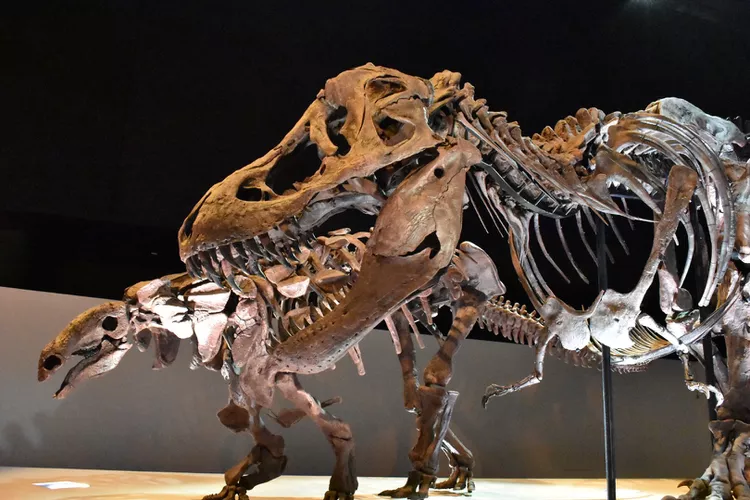Summary of Houston’s Top Museums
Houston Museum of Natural Science
Houston is fortunate to boast one of the nation’s richest and most developed museum populations. In the Museum District alone, there are nearly 20 distinct venues, and any listing of must-see museums will undoubtedly begin with the impressive Houston Museum of Natural Science.
Established in 1909 by the Houston Museum and Scientific Society, the Houston Museum of Natural Science has evolved into one of the most attended museums in the United States, welcoming over two million visitors annually. In addition to numerous traveling exhibits, the four-floored building showcases thirteen permanent exhibits that span various disciplines, including paleontology, space science, archaeology, and a children’s discovery area. Notable features include the Burke Baker Planetarium, Cockrell Butterfly Center, George Observatory, and an IMAX Theater.
Children’s Museum

For its size, the Children’s Museum of Houston ranks as the most frequented museum of its kind in the United States. The museum features a dozen highly interactive exhibits, including FlowWorks— a water play system, and Kidtropolis—a child-sized city complete with skyscrapers, city government, and various professions. On the upper floor, infants and toddlers up to 35 months can enjoy the Tot Spot, housing toys and structures tailored for younger children. With constantly changing activity stations, there is always something new to discover.
Space Center Houston

Space Center Houston serves as the official visitor center for Lyndon B. Johnson Space Center (NASA). Key attractions include the Northrop Grumman IMAX Theater and Martian Matrix— a play area designed for pre-K through 5th graders. Space artifacts and hardware, such as the Mercury 9 Capsule, Lunar Rover Vehicle Trainer, and the Skylab Trainer Mock-up, are exhibited here. Despite its advanced technology, the center is kid-friendly and accessible for a diverse range of ages and interests.
visitors can embark on tram tours to view iconic spaces within the center, including NASA’s mission control, the Saturn V rocket, and an overhead perspective of engineers, scientists, and astronauts diligently working on groundbreaking advancements in space technology.
Holocaust Museum Houston

Established in 1996, Holocaust Museum Houston ranks as the fourth largest such museum in the nation. It is one of the more impactful institutions in the district, showcasing personal accounts of the Holocaust through the Bearing Witness exhibit, which features the stories of survivors residing in the Houston area. Other exhibits include an authentic World War II Railcar used for transporting victims, the Danish Rescue Boat, and a rotating gallery of photographs and artwork within the museum’s two galleries.
Art Car Museum

As a staple of Houston’s alternative art scene, the Art Car Museum is dedicated to contemporary art. Since its opening in 1998, it has gained recognition as a notable local attraction, featuring uniquely designed cars and hosting an annual Art Car Parade. Furthermore, access to this museum is always free, which promotes community engagement and appreciation for art.
Contemporary Arts Museum

Housed in a striking stainless steel building, the Contemporary Arts Museum Houston opened in 1972, initially starting as a traveling exhibit around the city. As a contemporary museum, CAMH is dedicated to presenting modern artistic expressions to various audiences. Although exhibits frequently change, educational programs aimed at raising awareness among patrons remain a permanent feature. Moreover, access to CAMH is always free, fostering inclusivity within the community.
San Jacinto Monument and Museum of History

Rich in Texas history, the San Jacinto Monument and Museum of History are located within the same structure, as the museum resides at the base of the monument, which stands at an impressive 570 feet—making it the tallest in the world. The museum features exhibits related to Texas’s historical narrative, showcasing a rotating lineup of attractions, including Developing Houston, a photographic chronicle of the city’s timeline, and the Texas Navy Exhibit.
Houston Fire Museum

The Houston Fire Museum is a notable landmark in Houston, housed in what formerly served as the city’s first paid fire station. To enhance its growing online catalog of photographs and videos, exhibits showcase a 1937 Chevrolet Pumper, the Hopkins Collection— a rotating display of antique firefighting artifacts, and the renovated Watch Office, allowing visitors to simulate receiving a fire call as it would have been in the 1950s.
The Health Museum

Since its inauguration in 1969, following a successful Victory Over Polio campaign, the Houston Health Museum has established itself as one of the city’s most interactive museums, welcoming over 180,000 visitors each year. Highlights include You: The Exhibit, featuring a body scanner enabling visitors to see their insides in real-time, the Amazing Body Pavilion—a walking tour through a giant model of the human body, and the McGovern 4-D Theater, where audience members experience wind, rain, and scents, enhancing their cinematic experience.
Museum of Fine Arts Houston

As the fifth largest museum in the country, the Museum of Fine Arts Houston spans approximately 300,000 square feet across seven facilities, including landmarks like the Caroline Wiess Law Building, the Glassell School of Art, and Bayou Bend Collections and Gardens, which were once the home of esteemed Texan philanthropist Ima Hogg (donated in 1957). Founded in 1924, it was the first art museum building in Texas, now welcoming more than 1.25 million visitors each year. Its permanent collection comprises over 40,000 works from six continents, and it consistently features special exhibitions.





